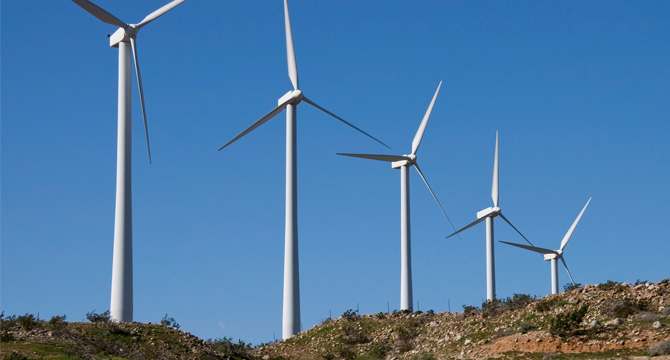
On July 27, 2018, the United States Court of Appeals (the “Court”) published its long awaited decision in the case of Alta Wind I Owner-Lessor C et al. v. United States, 2018 U.S. App. LEXIS 20931 (Fed. Cir. July 27, 2018) (“Alta”). The Court vacated and remanded the lower court decision, holding that allocation of the purchase price should be made using the residual method of Section 1060 of the Code.
In Alta, the developer (the “Seller”) of several wind farms (the “Projects”) sold the Projects to an investor (the “Buyer”) shortly before the Projects were placed into service and immediately leased the Projects back from the Buyer. Once the Projects had been placed in service, the Buyer applied for grants under Section 1603 of the American Recovery and Reinvestment Act of 2009 (“Section 1603 Grants”). The Section 1603 Grant program was created to increase investment in domestic, clean energy production. Under Section 1603, Treasury made payments in lieu of investment tax credits to eligible applicants for specified energy property used in a trade or business or for the production of income. The purpose of the 1603 payment was to reimburse eligible applicants for a portion of the cost of installing the specified energy property, including solar, wind, geothermal, biomass, fuel cells, hydropower, combined heat and power, landfill gas, municipal solid waste, and microturbine property. In the case of Alta, the Buyer treated virtually the entire purchase price as eligible basis for purposes of the Section 1603 Grants and claimed a total of over $700 million in Section 1603 Grants. In turn, Treasury reduced the amount of Section 1603 Grants to approximately $495 million, a reduction of over $206 million. Treasury based its determination based on the actual development and construction costs of eligible property, plus a “turn-key premium since the Projects were complete and ready to operate. The Buyers filed suit in the Court of Federal Claims (the “Claims Court”) to recover the $206 million shortfall and the government counterclaimed, stating that it had overpaid plaintiffs by $59 million.
The government argued that the basis of the property eligible for the grant should be calculated from the value of each wind farm’s grant-eligible constituent parts and their respective development and construction costs, citing a variety of factors that allegedly made the purchase prices an unfair measure of each wind farm’s eligible value. The government argued that the purchase of the Projects was an “applicable asset acquisition” under Section 1060 of the Code and that a portion of the purchase price should be allocated to intangible assets, including goodwill and going concern value using the residual method. Under the residual method, the overall purchase price is allocated on a waterfall basis among several categories of assets. The use of this method could result in a substantial portion of each purchase price being allocated to grant-ineligible assets (such as goodwill, going concern value, and other intangibles). On October 24, 2016, the Claims Court rejected the Government’s argument and found in favor of the owners, entering judgment for the full $206 million shortfall. The Claims Court found that no goodwill or going concern value could have existed at the time of the transfer because the wind farms were not yet operational. Therefore, Section 1060 did not apply, and there was no need to allocate basis according to the residual method. The government then appealed.
On appeal, plaintiffs and the government made the same arguments concerning the allocation of basis. However, the Court disagreed with the Claims Court regarding its finding that no goodwill or going concern value could have existed at the time of the transfer because the wind farms were not yet operational. The Court stated that “a group of assets constitutes a trade or business if the “character” of the group of assets transferred “is such that goodwill or going concern value could under any circumstances attach. There is no need to show that a transaction had actual, accrued goodwill or going concern value at the time of the transaction.” Thus, the purchase price of each wind farm must be allocated using the residual method under Section 1060 of the Code. The Court did agree that there may be “turnkey” associated with the Projects, which should be distinguished from good will and going concern value. The Court did not make a determination as to the proper allocation or whether goodwill or going concern value actually existed. The Court vacated and remanded the case to the Claims Court to determine the proper allocation of the purchase price for each wind farm under Section 1060.
